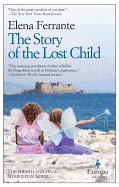
Like the previous novels in Elena Ferrante's Neapolitan quartet, the concluding volume, The Story of the Lost Child, is ferociously, compulsively readable. The story is laced with earthquakes and death threats, sibling betrayals and old animosities. Ferrante is a remarkable storyteller and knows just how much to tell every step of the way.
Nothing in this Neapolitan neighborhood stays the same for long. Shops close. Crime is on the rise. Friends who grew up together switch spouses like dance partners. Fiery, outspoken Lila, more mercurial than anyone, is seen as the only person capable of putting the neighborhood right. The strongest bond in Ferrante's quartet remains Lila's passionate, lifelong devotion to bookish, intellectual Elena, who is infamous after the success of her novel exposing local corruption.
Throughout all four volumes, Lila grows and changes before the reader's eyes. As two characters who are perfect foils for each other, Elena and Lila face the erratic turmoil of their intertwined lives in consistently revealing ways. Again and again, Ferrante takes the reader back to the first novella in My Brilliant Friend, in which the two girls lose their dolls. Each time she gives the account more nuance, more background information, until the initial novella in the first volume of the quartet is seen to contain the seeds of what will follow. Ultimately the plot comes full circle back to the beginning of the quartet, the framing story of Lila's disappearance, with one final moment that brings to a perfect close one of the greatest literary achievements of the new century. --Nick DiMartino, Nick's Picks, University Book Store, Seattle, Wash.

